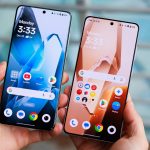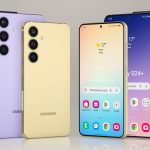Sarah Silbiger/Getty Images
- Black and brown Americans are receiving fewer COVID-19 vaccine jabs, despite dying at higher rates.
- US health systems must fund better outreach and education in communities of color, experts say.
- In healthcare deserts, more mobile clinics could help residents get vaccines.
- Visit the Business section of Insider for more stories.
Since COVID-19 arrived in the US a year ago, the country’s Black and Latino citizens have been hit hardest: their outsized representation as essential workers, along with other systemic factors, have left their communities more than two to three times more vulnerable to severe disease and death from the virus, overall.
Now, as relief begins trickling out to Americans in the form of vaccines, the same communities appear to be at a disadvantage, once again.
According to estimates from the US Centers for Disease Control and Prevention, in the nation’s first month of COVID-19 vaccinations, 5.4% of people who received a vaccine were Black.
That’s lower than the 16% of health care workers who identify as Black, the CDC said. Healthcare workers were among those prioritized for the first shots. Meanwhile, more than 60% of people who got shots were white.
Experts say we need to do three things to help increase the number of Black and Latino people getting COVID shots: increase outreach and education, improve access to vaccines, and partner with “trusted influencers” on social media, TV and radio stations to share better information.
Polls have shown that Black Americans and other communities of color are more likely to be hesitant about getting vaccines, which experts say is due to skepticism and mistrust of the US health system fueled by historical injustices. At first glance, the racial demographics of vaccine recipients may not appear skewed, since white Americans constitute a greater proportion of those over 65, and roughly 60% of healthcare workers are white.
But even with those considerations in mind, there’s evidence that limited resources for and outreach toward Black and Latino Americans is hindering the vaccine rollout.
A Kaiser Family Foundation analysis of 23 states reporting COVID-19 vaccinations by race and ethnicity revealed that Black and Hispanic people consistently received a smaller share of shots compared to their share of coronavirus cases and deaths. Across the country, wealthy white people are flocking to neighborhoods of color to receive vaccines meant to go to the hardest-hit communities instead.
“We have a lot of work to do in this area to achieve health equity,” Dr. Georges Benjamin, executive director of the American Public Health Association, told reporters last week.
Read more: Why America’s vaccine rollout was a total disaster – and what it means for the next few months
One problem is trust
The CDC estimated last summer that Black Americans aged 35 to 44 were 10 times more likely to die from COVID-19 than their white counterparts.
The difference had nothing to do with the color of their skin, but rather their different circumstances: Black and brown Americans are more likely than white ones to be essential workers, and they are overrepresented caring for elders in nursing homes, where the bulk of the country’s deaths have been centered.
From the beginning of this crisis, they also have not gotten the support or supplies they need to stay safe, Dr. Camara Jones, past president of the American Public Health Association said. After months of neglect and broken promises, it’s no wonder they’re not jumping at the chance to get a new vaccine now, she said.
Jeenah Moon/REUTERS
“The message shouldn’t be ‘here’s the vaccine, you better take it,’ Jones told Insider.
Communities that have been historically sidelined, maligned, or left behind aren’t going to automatically trust that public health experts are on their side, she said, especially during a pandemic in which they have been given garbage bags in place of proper protective gear to stay safe.
“People get the feeling, “Oh, you’re just trying to [vaccinate us] so that we can get to herd immunity to protect your children when they go to their fancy school,'” she said. “Instead of going and trying to convince people to take the vaccine, we should say ‘there are real and legitimate questions.'”
Another issue is education
Benjamin said that another reason healthcare workers may be skeptical of the new vaccines is that they haven’t been told yet about how, exactly, they work.
“What people want to know is that it is safe,” he said, stressing that many people who work in healthcare, such as nursing aides, LPNs, and foodservice workers “have not had the type of health background” that would have introduced them to how vaccines are developed, tested, and authorized, and why they’re safe for consumers.
A successful vaccine distribution program might include information sessions, given several days before shots, he said, or include public health messages from “trusted influencers” on the radio, TV, and social media.
Dr. James Hildreth, one of the experts who served on the US Food and Drug Administration’s advisory committee that evaluated both Pfizer and Moderna’s vaccines, has been chatting online with leading Black clergy members recently, answering their most pressing questions about the vaccine development process.
Black people like himself, he said, have “been involved in every phase of development.”
AP Photo/Travis Loller
“We’re sitting on all sides of the table, and that alone makes this very different from the Tuskegee experiment,” said Hildreth, who’s president of Meharry Medical College. “We would not risk our reputation as an institution if there was the least bit of concern that the vaccines were not safe.”
Vaccine access and transportation to shots is also problematic
Several experts said they’re worried that minorities may have trouble getting the vaccine, even if they want it.
“There really are extreme concerns around access, even for folks that are in the healthcare system,” said Dr. Utibe Essien, assistant professor of medicine at the University of Pittsburgh School of Medicine.
Online systems to sign up for vaccine appointments and a lack of public transportation to sites may disadvantage vulnerable populations.
Advocates for senior citizens previously told Insider that some elders, particularly those from low-income backgrounds, lack the resources to make appointments. Drive-thru sites, like at Los Angeles’ Dodger Stadium, also require vaccine-takers to have access to a car and the flexibility to leave for vaccine appointments that may be scheduled during work hours.
Reuters/Octavio Jones
“People who have to work a couple of shifts a day or work odd hours are going to be important,” Benjamin said. “I’ve often said if we can get fast food delivered 24 hours a day, we ought to be able to get vaccinations delivered 24 hours a day, 7 days a week.”
In healthcare deserts, more mobile clinics could help fill in some of these gaps, said Dr. Stephanie Mayfield, director of the COVID-19 response initiative at Resolve to Save Lives.
“Transportation to go and get the vaccine becomes a major issue,” Mayfield said during a press briefing in February.
Health officials must do a better job of collecting data and reaching out communities of color
The CDC said its analysis of COVID-19 vaccinations was limited by missing data, as nearly half of shots given in the first month lacked race and ethnicity information.
Essien said the lack of data, which has been a problem since the beginning of the pandemic, makes it hard to know where to focus vaccination efforts.
“If we don’t feel confident in the data, we are not going to know how to distribute resources to those communities in need, which I think is really the key course-correcting step we have to take,” he said.
Don’t lie, or ‘butter it down,’ one doctor said
Dr. Robert Drummond, an internist who had COVID-19 last summer, is using Instagram to connect with communities of color.
Drummond told Insider that federal and state health departments should allocate more funding to educate minority communities on how and why to get vaccinated. The best way to get people of color vaccinated is to meet them where they are, such as in churches, barber shops, and on social media, he said
“They have to find innovative ways to get this vaccine out to individuals that are in need,” Drummond said.
He has had success convincing people to get vaccinated by reaching out from a place of concern for their overall health. For instance, If one of his Black followers is skeptical of the vaccine, he will discuss how vitamin D deficiencies, which are more prevalent in darker skinned people, have been linked to more COVID-19 hospitalizations and deaths.
Courtesy of Robert Drummond
The doctor posts videos of himself frankly discussing COVID-19 vaccines to his 21,000 Instagram followers to build trust.
“It hurts,” Drummond said on the platform, after he got Moderna’s two shots. “I’m not going to lie about it, I’m not going to butter it down.”
“But you know, again, for people who are asking, ‘Is it worth it or not?’ absolutely it’s worth it,” Drummond added. “I remember what COVID felt like … I still don’t know how much damage that damn virus did to my body. None of us do.”
Powered by WPeMatico




